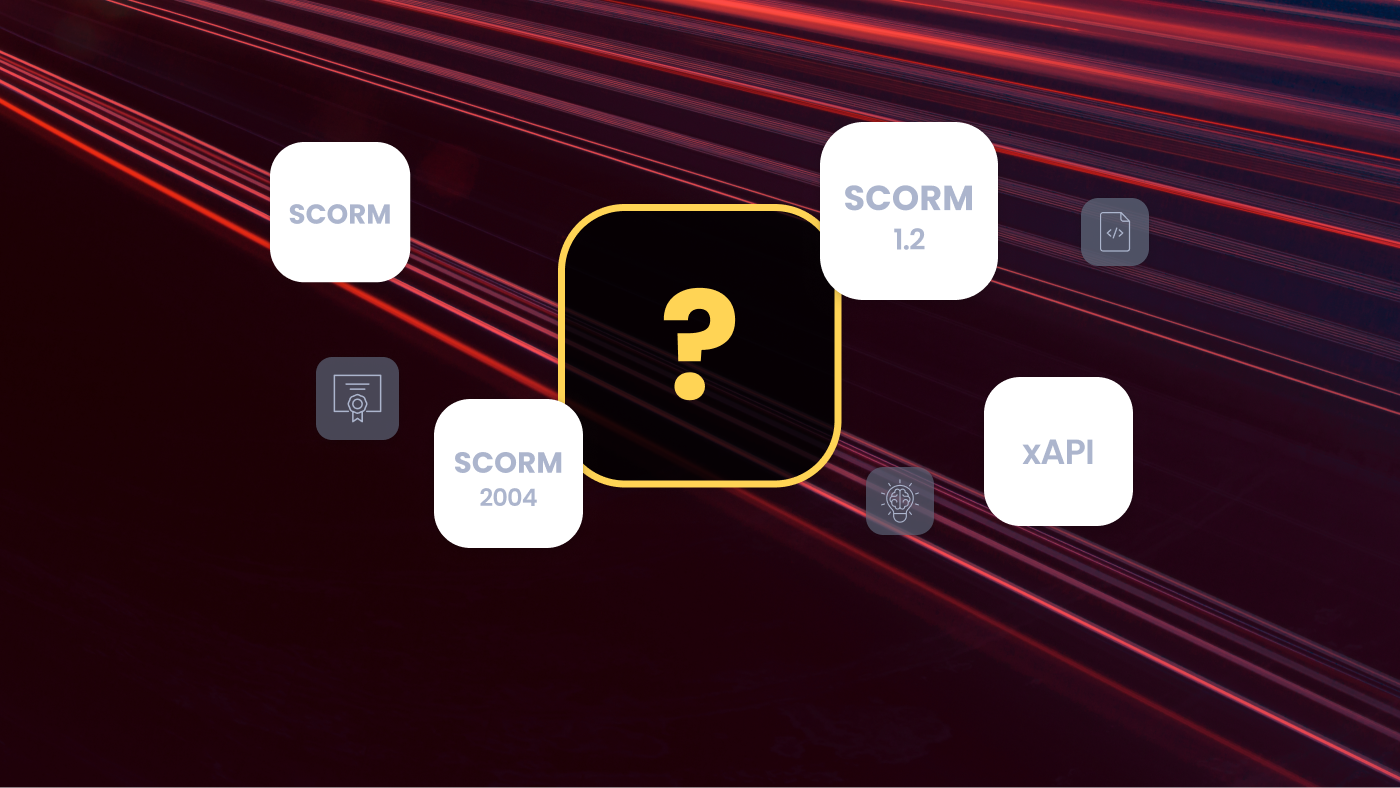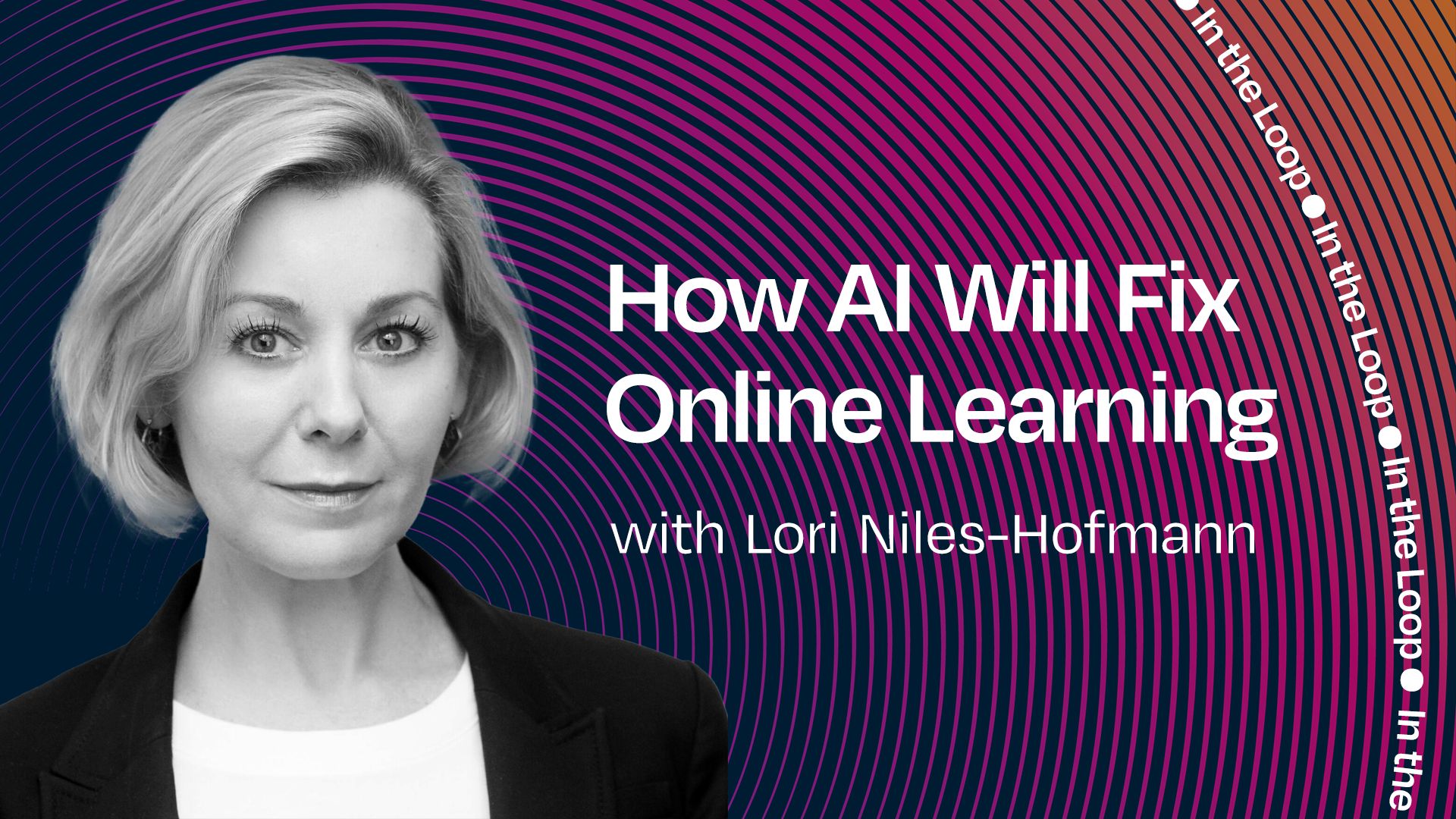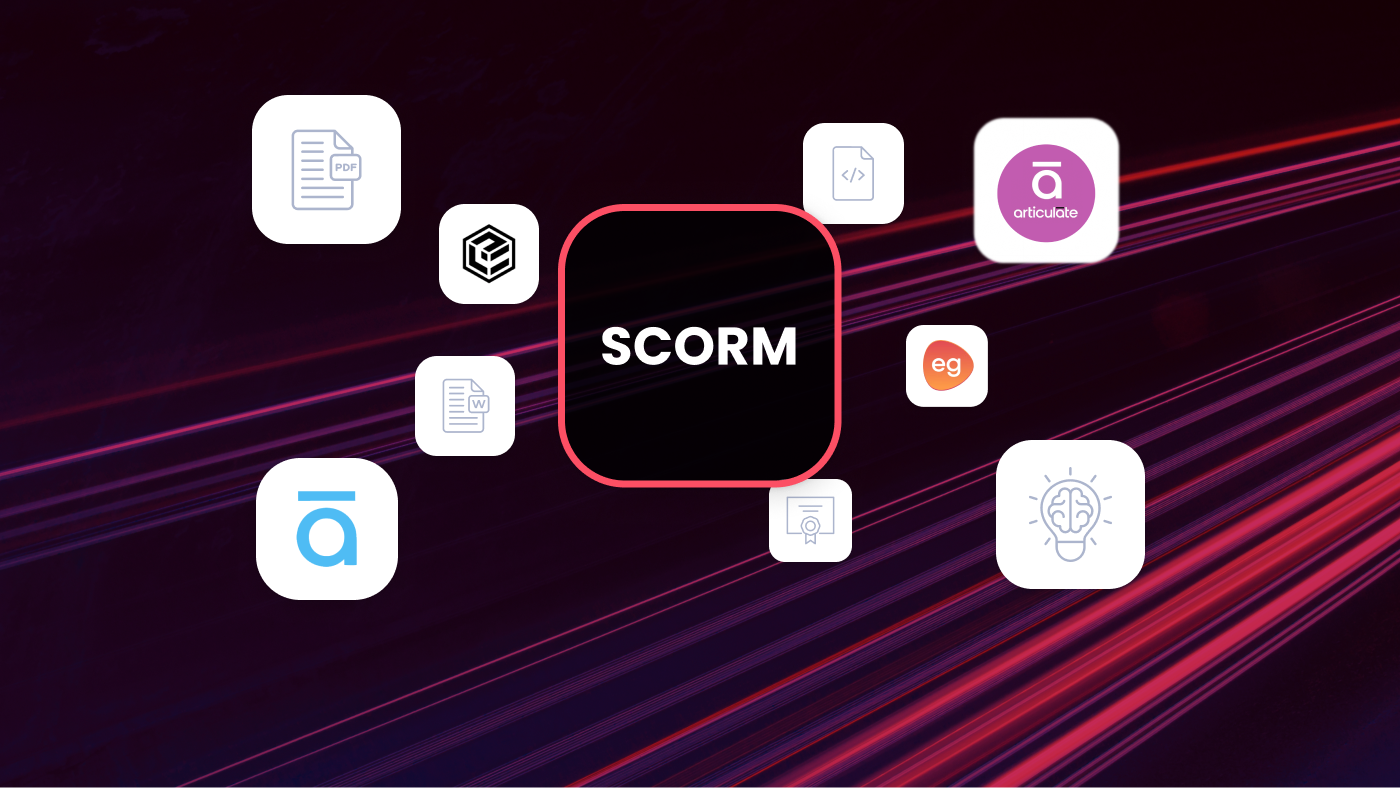Top Four AI Trends & Predictions Of Summer 2025 | In The Loop Episode 26
.png)
Published by
Published on
Read time
Category
There’s a series of interesting trends and ideas emerging in AI right now, and as we reach the end of summer, it’s a great opportunity to summarise them. Today, AI companies will have to start paying to read websites. Investors are beginning to trade computing power like they would oil. We’re seeing major brands launch websites dedicated to agents, and companies with just 20 employees are now worth more than those with 2,000. None of these things were happening even three, six, or twelve months ago.
Each story may seem isolated, but together they point to something bigger. The basic assumptions about how our digital economy works are being challenged. In today’s episode, we’ll discuss the biggest ideas and trends shaping AI in the summer of 2025. My name’s Jack Houghton, and this is In The Loop. I hope you enjoy the show.
1. What are ambient agents?
Let’s start with something that sounds simple but is incredibly important for the future of AI: ambient agents.
Right now, when you use AI, there’s a clear start and end to a conversation. You open ChatGPT, ask a question, get an answer, close the tab, and you’re done. That’s changing fast. The idea of agents doing many things for you isn’t new, but the concept of an ambient agent is gaining a lot of traction.
Quick story before I explain what that means. When you’re building at the cutting edge of AI, you often create something so new you’re still figuring out its role in the world—and then discover that others have arrived at the same idea at the same time. We were going to call ours “meta agents,” and then I came across papers and articles announcing this new concept under the name “ambient agents.”
They’re called ambient agents because they work continuously in the background. They can monitor information, take actions, or give you recommendations without you actively engaging with them.
To understand why this shift matters, it helps to compare them with the AI tools we use today. Traditional AI operates on a request–response cycle: you make a request, it responds, and that’s it. Ambient agents are different—they’re part of an event-driven system. They monitor data streams and act when something relevant happens, whether that means making changes in another system or giving you a recommendation.
For example, at Mindset AI, our customers have large websites and technology platforms with hundreds of thousands of users. They might build an AI learning agent, search agent, or web agent to recommend content to users. Getting the configuration and available actions right takes work. We created meta agents—a set of agents that monitor all the others on the platform to manage performance and spot when a configuration or toolset needs to change.
These meta agents draw from a central “data pool”—a large store of collected information. We tell them exactly what to watch for, such as user behavior or how questions align with an agent’s configuration and purpose. Once they detect a relevant pattern, they take action.
The difference is huge. It’s like having one assistant who sits at their desk waiting for you to ask for help versus another who’s already scanning your emails, checking your calendar, anticipating projects, spotting potential issues, and proactively making recommendations.
Harrison Chase, founder of LangChain, is one of the biggest advocates for this shift to ambient agents. His argument is compelling: we need to move away from chat-based agents that require humans to come to them, because in the future there could be thousands—even millions—of agents quietly monitoring important information in the background.
Technically, because they’re event-driven, you can subscribe ambient agents to almost any data stream: emails, website visits, user behavior, or even data from physical devices like cars. They can track this information across countless digital spaces, which is both fascinating and a little unsettling.
An agent must also store what it gathers in long-term memory—or context. At Mindset AI, this means setting variables for what the agent should remember. That allows it to relate new information to past events, ongoing projects, or future objectives. When a new event occurs, the agent can be configured to escalate certain situations to a human or simply log them for later.
That’s the “ambient” element—always present, always monitoring, and ready to act. This is why we called ours meta agents. They’re constantly behind the scenes, watching key information and stepping in when needed.
The concept of “human in the loop” will have to change. Otherwise, agents will be constantly pinging you for input. Instead, we need an “agent inbox”—a management dashboard showing everything your AI agents are working on and the tasks they’ve completed. You could review decisions, give feedback quickly, and keep oversight without constant interruptions.
Coincidentally, as all this news has been surfacing, Mindset AI has been (somewhat glitchily) launching our own administration portal for managing agents, which we’re calling the Agent Management Studio. It lets you see every active agent, the information flowing into it, its interactions, and effectively keep tabs on your entire deployed AI team.
The real-world applications are compelling: detecting learners who are struggling, spotting disengaged users, flagging angry customers, or identifying people who may be unwell. A major financial services company recently launched a compliance auditor agent that scans all transactions and internal communications for policy breaches, flags suspicious activity, and automatically drafts incident reports.
As a technologist, I’m excited by how this could change the way work gets done. But I also think it’s important to recognize that this isn’t just about productivity—it’s a version of always-on capitalism. We’re moving toward a world where human rest is treated as an inefficiency, optimised away by machines that don’t need breaks. In this environment, data privacy and security will become more important than ever, because these agents can make decisions at speeds and scales that humans simply can’t match.
2. Pay-per-crawl
Anyway, let’s move on to trend number two: pay per crawl.
For 25 years, the internet has operated on a simple deal—content is free for everyone, and everyone benefits from that open exchange. Search engines crawl websites, people search and click through to read, and the system works because of that flow of traffic.
AI is starting to break that system. AI models can scrape millions of webpages for training data and generate answers without sending users back to the original sources. Instead of clicking through to read a full article, people get their answer from AI and move on. That means websites lose huge amounts of traffic while AI companies profit from their content.
The problem is obvious: if nobody creates new content because they’re not being paid for it, what will AI be trained on?
The numbers are striking. Google’s crawl-to-referral ratio—the number of times it crawls a site compared to how often users click through—has gone from 6:1 to 18:1 in just six months. For other AI systems like ChatGPT, it’s far worse: around 1,500:1, meaning almost zero traffic returns to the sites being scraped.
This has triggered a big shift in how the internet works. In July 2025, Cloudflare—best known for the “are you human?” tick box—launched pay per crawl. This system lets website owners charge AI crawlers for access to their content. Instead of simply allowing or blocking crawlers, publishers can set a price per request. When an AI tries to access their content, the site can respond with, “That’s going to cost you,” and charge accordingly.
Unsurprisingly, many publishers are on board. Reddit is suing Anthropic for scraping its data, and the message across the internet is clear: pay or get blocked.
Critics warn this could set a dangerous precedent. For example, TechRadar published an in-depth analysis showing that pay per crawl will mainly benefit the top 1,000 websites, while smaller sites will get almost nothing. Even worse, only a few companies—Google, Microsoft, OpenAI—will be able to afford these licenses, effectively locking out startups and smaller organisations.
Ultimately, this could represent the collapse of the internet’s original promise of free access to information. Shared knowledge is shifting into private property. Personally, I find that sad, even if I understand why it’s happening.
There are more optimistic paths forward—for example, a “Spotify for data,” where developers pay for access to a large library of licensed content. That way, creators get compensated while broad access to information is preserved for both users and AI models.
I don’t know exactly what the future will look like, but I’m fairly certain the web of today will be very different from the web of tomorrow.
3. GPU becoming a tradeable commodity
Okay, let’s move to trend number three: the financialization of compute.
This is where things get a little strange. Wall Street has discovered that the computer chips powering AI are so valuable they’re starting to treat them like gold, oil, or any other tradable commodity.
Here’s what that means. Investors can buy oil futures—essentially betting on the price of oil two, three, or nine months from now. They’re now doing the same with computing power and AI chips. People are literally trading contracts for GPU time the way they would for gold or oil.
Startups have launched services described as “Bloomberg for CPU pricing,” tracking the market value of different types of chips. Another company, GAIB, has begun issuing tokens representing claims on revenue from specific GPU clusters—essentially, factories of GPUs running in the background. This means you can own a slice of a data center’s earnings, similar to owning shares in a manufacturing plant. You’re effectively betting on the utilisation—and therefore success—of tech and AI companies.
What this shows is that computing power is joining housing, healthcare, water, and education as something you can’t just buy freely—you have to compete for it with Wall Street investors. When something becomes a speculative investment, people start buying not because they need it, but because they expect the price to rise. That’s how bubbles form, and when they burst, they can destabilise entire economies.
This is especially risky because compute isn’t just another asset—it’s core infrastructure. Without it, most technology systems would grind to a halt. On one hand, this could concentrate power even further into a few companies, like Nvidia, that dominate the market. On the other, some argue financializing compute could make it more accessible and competitive by creating new markets.
To me, it’s a sign of how efficient our economic system has become at extracting profit from absolutely everything—even from computational power that hasn’t yet been used by a tech company.
4. What is Agent Experience (AX)?
Let’s move on to number four: websites and products are increasingly being built for agents, not humans. You could call this the Agent Experience (AX), much like UX, but for AI. It’s a significant shift in how technology is designed.
For decades, the progression has been clear. First, products were built for technical users—moving wires around, working with ones and zeros in the early days of computing. Then came the focus on user experience, with companies like Apple bringing technology to the masses. Over time, that experience was optimised for developers through APIs. Now, we’re adding a new dimension: designing for AI.
In an AI-powered world, human leverage can be amplified to an unprecedented degree—but that amplification isn’t distributed equally. It’s concentrated among those with specific skills that will be most valuable in an AI-driven future. That’s why I encourage people to learn more about AI, and to share that knowledge with colleagues and friends.
Closing thoughts
As we wrap up, it’s worth looking at what these trends tell us. We’re living through a time when the fundamental assumptions about work, ownership, competition, and value creation are all shifting at once. These aren’t isolated developments—they’re all part of the same transformation: the emergence of an economy where AI doesn’t just help people do their work, but increasingly does it for them.
The optimistic view is that we’re laying the foundation for an incredible future, full of prosperity and potential. It’s an exciting moment, and it’s why every one of us should be learning more about AI.
Thanks for listening to today’s episode, I’ll see you next week.
Book a demo today.




.png)
.png)
.png)
.png)
.png)
.png)
.png)
.png)
.png)


.png)


.png)
.png)
.png)

.png)
.png)


.png)
.png)
.png)
.png)
.png)
.png)

.png)
.png)
.png)
.png)
.png)
.png)
.png)
.png)
.png)


.png)
.png)
.png)

.png)
.png)
.png)

.png)
.png)
.png)



.png)






.jpeg)